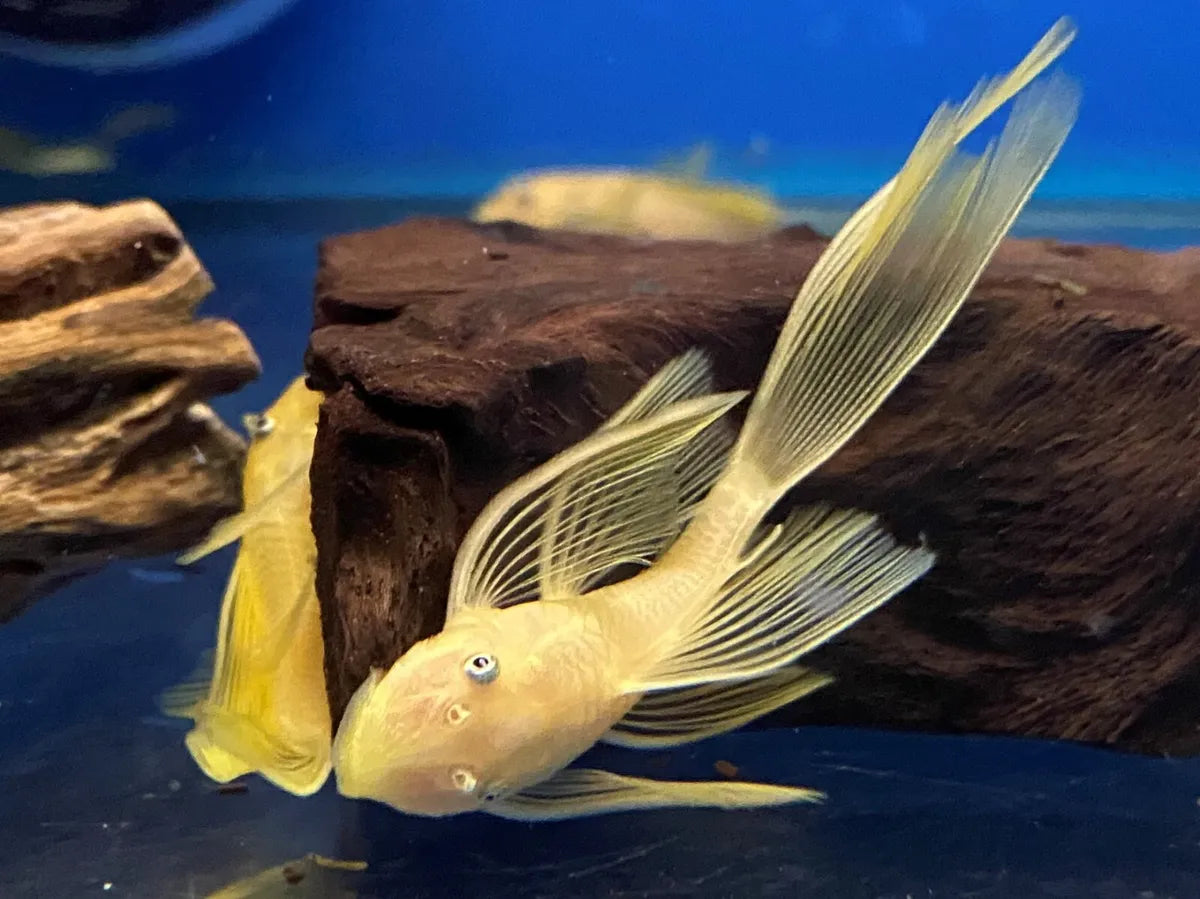1
/
of
1
Pleco - Blue Eyed Lemon Bristlenose Longfin L144
Pleco - Blue Eyed Lemon Bristlenose Longfin L144
Regular price
$100.00 AUD
Regular price
$120.00 AUD
Sale price
$100.00 AUD
Unit price
/
per
Taxes included.
Classification:
Order: Siluriformes
Family: Loricariidae
Distribution:
A. cirrhosus is native to the Argentinian portion of the Paran river drainage but all A. cf. cirrhosus in the hobby are produced commercially and of uncertain origin.
Habitat:
Unknown.
Maximum Standard Length:
100 – 125mm
Aquarium Size:
A tank with a base measuring 60 x 30cm or equivalent is sufficient to house a single specimen or breeding pair. Larger quarters would be required for a group.
Maintenance:
Compared to some others in the genus it’s largely undemanding, but does prefer well-oxygenated water. Provided there is plenty of cover decor is largely unimportant.
Water Conditions:
Temperature: 21 – 26°C
pH: 5.5 – 7.5
Hardness: 18 – 268ppm
Diet:
Does best when offered a varied diet comprising sinking dried foods, frozen Daphnia, mosquito larvae, chironomid larvae (bloodworm), and prawn/shrimp, for, example, plus some fresh fruit, parboiled potato, etc. Home-made foods using a mixture of natural ingredients bound with gelatin are very useful since they can be tailored to contain fresh vegetables, Spirulina and meatier ingredients.
Behaviour and Compatibility:
Relatively peaceful but territorial with conspecifics and similarly-shaped species.
Sexual Dimorphism:
Adult males possess well-developed odontodes on the pectoral fins and opercle and tentacles on the head while females do not.
Reproduction:
Cave-spawner with the male responsible for brood care. It’s commonly bred in aquaria and in well-maintained, mature set-ups juveniles may begin to appear without intervention.
Order: Siluriformes
Family: Loricariidae
Distribution:
A. cirrhosus is native to the Argentinian portion of the Paran river drainage but all A. cf. cirrhosus in the hobby are produced commercially and of uncertain origin.
Habitat:
Unknown.
Maximum Standard Length:
100 – 125mm
Aquarium Size:
A tank with a base measuring 60 x 30cm or equivalent is sufficient to house a single specimen or breeding pair. Larger quarters would be required for a group.
Maintenance:
Compared to some others in the genus it’s largely undemanding, but does prefer well-oxygenated water. Provided there is plenty of cover decor is largely unimportant.
Water Conditions:
Temperature: 21 – 26°C
pH: 5.5 – 7.5
Hardness: 18 – 268ppm
Diet:
Does best when offered a varied diet comprising sinking dried foods, frozen Daphnia, mosquito larvae, chironomid larvae (bloodworm), and prawn/shrimp, for, example, plus some fresh fruit, parboiled potato, etc. Home-made foods using a mixture of natural ingredients bound with gelatin are very useful since they can be tailored to contain fresh vegetables, Spirulina and meatier ingredients.
Behaviour and Compatibility:
Relatively peaceful but territorial with conspecifics and similarly-shaped species.
Sexual Dimorphism:
Adult males possess well-developed odontodes on the pectoral fins and opercle and tentacles on the head while females do not.
Reproduction:
Cave-spawner with the male responsible for brood care. It’s commonly bred in aquaria and in well-maintained, mature set-ups juveniles may begin to appear without intervention.
Share


